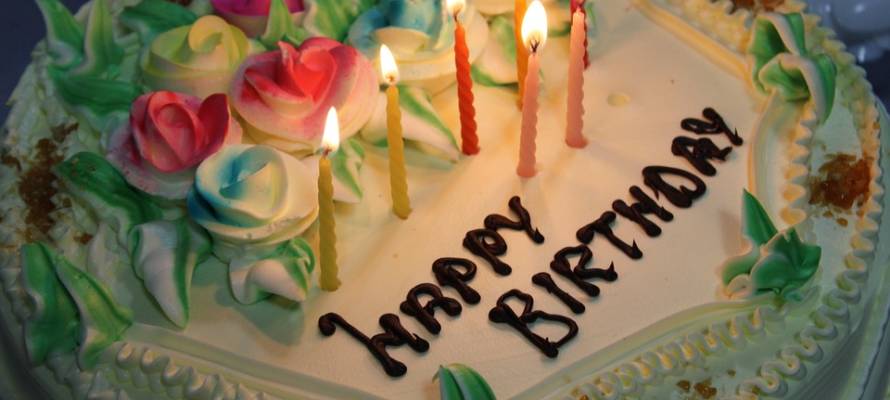Friday, September 3, 2021
How Praying for Others Invites Blessings into Our Lives...On Rosh Hashana, we are reminded that prioritizing the needs of others is a powerful way to emulate God’s ways! By Rabbi Ari Enkin, Rabbinic Director, United with Israel

On Rosh Hashana, we are reminded that prioritizing the needs of others is a powerful way to emulate God’s ways!
By Rabbi Ari Enkin, Rabbinic Director, United with Israel
We are told that three barren women were remembered and blessed with a child on Rosh Hashana: Sarah, Rachel, and Chana. The question is asked: Why is this information important? Is there a common denominator between these three women?
It is explained that there is indeed a connection between these three women and the explicit fact that their prayers were answered. In all three cases, these women were somehow involved with praying or otherwise expressing concern for others. In some cases, they even prayed for others before they prayed for themselves. We are taught that those who pray for the needs of others will they themselves be answered first!
Regarding Sarah, we are told that Abraham had previously prayed that Abimelech be cured from his illness. Therefore, Abraham’s personal prayers for healing, namely, for his wife Sara, were answered first. Abraham prayed for someone else, and God rewarded him by answering his prayers.
Regarding Rachel, we are told that Rachel also worried about someone else. Rachel allowed her sister Leah to marry Jacob, who was truly expecting to marry Rachel. When Leah, and not Rachel, was brought into the wedding chamber, Rachel remained silent so as not to let her sister be shamed and rejected on “her” wedding night.
Rachel allowing her sister to marry her finance in order to save her sister embarrassment is truly a heroic act of self-sacrifice. God noted how caring and considerate Rachel was to Leah and in that merit answered her prayers years later when she was barren.
Regarding Chana, she too was barren for many years. Her prayers were answered and she became pregnant not because she wanted to have a child for her own interest, but rather because she wanted to give birth to child whose life could be dedicated to serving God. Again, it was a selfless request, so her prayers were answered.
Maybe this is the secret of having our prayers answered on Rosh Hashana: Pray for someone else! Do you know someone with similar needs as yours? Maybe you need a better medical report? Maybe you need a bit of a raise in order to get by? Maybe you are looking for a spouse? Well, try praying for others in a similar situation, and maybe, just maybe, your prayers will be answered…both for your benefit and theirs!

Rosh Hashana: Faith is Our Anchor in an Unpredictable World...Balancing the joyful holiday mood on Rosh Hashana with the solemn nature of the Day of Judgment reminds us that faith in God is what keeps us on the right path in life. By Rabbi Ari Enkin, Rabbinic Director, United with Israel

Rosh Hashana: Faith is Our Anchor in an Unpredictable World
Balancing the joyful holiday mood on Rosh Hashana with the solemn nature of the Day of Judgment reminds us that faith in God is what keeps us on the right path in life.
By Rabbi Ari Enkin, Rabbinic Director, United with Israel
On a regular weekday, the primary prayer, the Amidah, contains nineteen blessings. On Shabbat it contains seven.
On Rosh Hashana, however, it contains nine: the three openings blessings, which are the same every day of the year, the three concluding blessings, which are also the same every day of the year, and three “middle” blessings that are unique for Rosh Hashana.
One of these three middle blessings refer to God as King over the world, one refers to the fact that nothing is forgotten from before God, and one is about the role of the shofar in Jewish history.
Why is the Rosh Hashana prayer specifically nine blessings?
The Talmud says that the sages instituted a nine-blessing prayer in order to recall the famous prayer of Chana in which God is mentioned nine times.
The story of Chana is read on the first day of Rosh Hashana. Chana was barren. She was married many years but had no children. She would make an annual pilgrimage to the Mishkan, the Tabernacle in Shilo (The Tabernacle was the Holy Temple, before the true and permanent Holy Temple was built in Jerusalem) to pray for children.
Chana was especially distraught at not having children because her husband’s other wife, Penina, had bore him several offspring. In fact, Penina would even tease Chana about the fact that she had no children. Chana felt embarrassed and useless. She cried her heart out. Chana’s prayers were finally answered on a Rosh Hashana, and nine months later, she gave birth to a son who grew up to become Samuel the prophet.
The story of Chana is not merely a touching story. It seems to be a fundamental principle and message for all of Rosh Hashana. Not only do we read the story in full on the first day of Rosh Hashana, but as mentioned we even have a special prayer, recited on both days of Rosh Hashana (the longest Mussaf service of the year, in fact!), that was formulated with nine blessings to once again recall the story of Chana.
What’s going on over here? Why is the story of Chana so central to Rosh Hashana?
It is explained that Chana’s prayer is especially important because it shows that life is full of ups and downs. For example, Penina had at least 7 children, and eventually so did Chana. However, with each child that Chana bore, one of Penina’s children died! Who would have thought? God can make the rich man poor and the poor man rich, in the bat of an eyelash.
A person’s fortune can change without notice. And so Chana tells us: “Don’t be haughty you who are mighty … you never know when you may fall and the weak one will emerge.”
Chana’s message is truly the message of Rosh Hashana: Life in unpredictable. We have no one to rely upon but God.
And so it is. Rosh Hashana is the day of judgement. We pray, pray, pray. We worry about what kind of year we are going to have A bit of fear and anxiety, perhaps. But on the other hand, we also celebrate. We have elaborate meals, fine meat and wine, and we wear our finest clothes. How are we meant to juggle both themes?
The answer to this question comes from the shofar. The shofar is a beautiful ram’s horn. Often long and elaborate, curved and even glazed. It is a beautiful ritual object. But what kind of sound does the shofar make? It makes a crying sound, a whimpering sound, a staccato sound.
It’s outer appearance leaves one unsuspecting with regard to the kind of sound the shofar makes. It is beautiful on the outside, but it makes a somewhat sad sound.
This is the secret to properly observing Rosh Hashana. On the outside we must be beautiful, happy, and well fed. But on the inside we must have that whimpering attitude, the internal cry of hope and prayer for a sweet new year.

Rosh Hashana: Happy Birthday, World!...What does the birth of the world have to do with the day of judgment? By Rabbi Ari Enkin, Rabbinic Director, United with Israel

Rosh Hashana: Happy Birthday, World!
What does the birth of the world have to do with the day of judgment?
By Rabbi Ari Enkin, Rabbinic Director, United with Israel
“Today is the birth of the world,” says the famous Rosh Hashana prayer; “Today all creation stands in judgment.”
What does the world’s birth have to do with judgment?
Judgment is a difficult, painful process. So is birth. By being judged on Rosh Hashana, we have the ability to be born anew.
We are given a fresh new start. But we can only reach that milestone if we go through the difficult process of judgment first.
Often the most difficult part of childbirth, and the first part of the baby to enter the world, is the head – just as Rosh Hashana literally means the “head” of the year.
Once the head is out, the rest of the body usually follows with relative ease.
During the Hebrew month of Elul, we suffered the contractions leading up to the birth of this new year, which occurs on the first day of Tishrei.
Changing our ways is not easy. But we know we must go through hard labor if we want to be reborn.
Opening our hearts to recognizing our faults is the first step. Apathy is a much easier path to take – waking up to realize how far I am from my potential is emotionally painful.
Yet we know that self-realization can lead to something great.
Midwives will tell you that a woman who tries to fight her contractions or tenses up in fear will slow down the birth process. Usually, they encourage women to walk around and keep moving rather than to sit or lie down. During Elul, we needed to keep moving spiritually, despite the instinct to do otherwise.
Then comes the “transition phase.” Right before the final stage of labor, the mother may feel a slowing down in contractions. Her body is preparing for the final stage. Similarly, the shofar (ram’s horn) is blown every day of the month of Elul except for the day before Rosh Hashana – our transition phase into the High Holidays. We, too, are preparing for the birth of the world, and for our own rebirth.
On Rosh Hashana itself, we arrive at the birth. The shofar blows, echoing the cries of a woman in labor. It’s no coincidence that the Torah readings of this holy day revolve around conception and childbirth. The narratives of Sarah, Rachel, and Chana – three women who were barren and then conceived – are the stories chosen to be read aloud at synagogue on Rosh Hashana.
The shape of the shofar, too, reflects this theme. “From the straits I called upon G-d; G-d responded with expansiveness” is the first verse read before blowing the shofar. Narrow on one side and wide on the other, the act of blowing the shofar symbolizes the move from narrow straits to expansiveness, just as a baby being born must first pass through the narrow birth canal before entering the expansive world.
No wonder Kabbalists point to the time of shofar blowing as the moment of judgment on Rosh Hashana.
The rabbis teach that there are three processes that take place through God directly, without any intermediary. One of them is birth. On Rosh Hashana, G-d is so very close to us. He is right with us, helping us through the process. During the shofar blasts, our thoughts should be on accepting and embracing whatever judgment God makes.
We know it may be painful – excruciatingly so – but it is the only way new life can be born.
Then, when the prayer services are over and the shofar has been blown, go home and celebrate with your family! You, and the world, have been reborn. Happy birthday!

Living Torah: When Abomination Becomes the Norm...Sin is a slippery slope. Eventually a person rationalizes that which had originally been unthinkable. By Rabbi Ari Enkin, Rabbinic Director, United with Israel

Living Torah: When Abomination Becomes the Norm
Sin is a slippery slope. Eventually a person rationalizes that which had originally been unthinkable.
By Rabbi Ari Enkin, Rabbinic Director, United with Israel
This week’s Torah portion is “Nitzavim” (Deuteronomy 29:9–30:2), and at 40 verses and 553 words, it is the shortest Torah portion in the Torah.
One of the verses reads, “For you know how you lived in the Land of Egypt and how you travelled among nations whose countries you have passed through. You have seen their abominations and their detestable idols (“shikutzeihem” – “giluleihem”) of wood and stone, of silver and gold that were with them.”
This verse is a derogatory reference to the idols which the nations that the Jewish people wandered among had worshipped. Let’s look at the description of the idols in the original Hebrew: “shikutzeihem” or “sheketz” means “disgusting,” and “giluleihem” or “galal” is often used to describe human excrement.
It is noted that the verse begins by describing the idols with these extremely disdainful terms but then simply refers to them as “wood” and “stone” – not too bad. Finally, they are called “silver” and “gold.” Hmmm. That actually sounds pretty nice! Who wouldn’t want some extra silver and gold hanging around the house? What’s going on over here? Why do we have three “groupings” of terminology to describe idols: horrible, neutral, and good. Which is it?
It is explained that this verse corresponds to the thinking of a sinner. When first seeing something bad or sinful, one is usually turned off by it, not interested, and maybe even disgusted. But sadly, we get used to sin. When we see people doing terrible things, it is usually only revolting the first few times. After awhile, we become somewhat immune to the immorality and all the “alternative” lifestyles all around us. No longer “excrement” but rather “neutral,” like “wood” and “stone.” And sometimes, sadly, these deviations become the norm.
Heck, sometimes people find themselves defending and supporting such craziness – “silver” and “gold.” Yes, more often than not, people get used to things. Even bad things.
This is exactly how the “yetzer hara,” the evil inclination, works. As the Talmud says, “This is the way of the evil inclination: Today it tells us to do this-and-that. Tomorrow it tells us to do some more of this-and-that. Eventually, we will find ourselves in idolatry and other terrible sins.” Sin is a slippery slope. Eventually a person rationalizes that which had originally been unthinkable.
The message is clear. We cannot allow ourselves to become accepting of the unacceptable or immune to spiritual diseases. Remember: if it was ever excrement, it always will be excrement.
For more insights by Rabbi Enkin on this week’s Torah portion, click on the links below.
https://unitedwithisrael.org/living-torah-rosh-hashana-is-the-perfect-time-to-choose-life/
https://unitedwithisrael.org/living-torah-the-ability-to-repent-rests-only-within-ourselves/

Do You Love Israel? Make a Donation to Show Your Support!
Donate to vital charities that protect Israelis and help inspire millions around the world to support Israel too!
Now more than ever, Israel needs your help to fight - and win - the battle of public opinion.
Anti-Israel bias and boycotts are out of control. Israel's enemies effectively use social media to incite brutal terror against innocent Israeli civilians. Please help us fight back!



